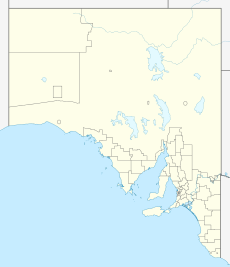Charleston Conservation Park facts for kids
Quick facts for kids Charleston Conservation ParkSouth Australia |
|
|---|---|
|
IUCN Category III (Natural Monument)
|
|
| Nearest town or city | Lobethal |
| Established | 8 April 1976 |
| Area | 54 hectares (130 acres) |
| Managing authorities | Department for Environment and Water |
| See also | Protected areas of South Australia |
Charleston Conservation Park is a special protected area in South Australia. It's like a natural treasure chest, keeping important plants and animals safe. This park is found in a place called Charleston, which is part of the beautiful Adelaide Hills. It's about 32 kilometers east of Adelaide, the state capital, and about 7 kilometers north of the town of Lobethal.
About Charleston Conservation Park
Charleston Conservation Park was officially created on 8 April 1976. It covers an area of about 54 hectares, which is roughly the size of 100 football fields! The main goal of this park is to protect a unique part of nature. It's managed by the Department for Environment and Water in South Australia.
Why is it special?
This park is very important because it protects a rare type of forest. It shows where the wetter forests of the Mount Lofty Ranges meet the drier woodlands to the east. This mix means you can find many different kinds of plants and animals here.
- Plants: The park has many types of trees. You can see Casuarina stricta with some Eucalyptus leucoxylon and E. viminalis. There are also areas with lots of E. leucoxylon and Banksia marginata.
- The ground layer has plants like Acacia pycnantha. You might also spot thick patches of Leptospermum myrsinoides and Xanthorrhoea semiplana.
- Younger trees like Acacia melanoxylon and Callitris preissii are also growing here.
- Animals: The park is home to many animals. At least 76 different kinds of birds have been seen here!
Protecting the Park
Charleston Conservation Park is in excellent condition. It has never been used for grazing animals like sheep or cows. This means its natural environment is very well preserved.
The park is recognized internationally as an IUCN Category III protected area. This means it's considered a natural monument or feature that needs protection.


